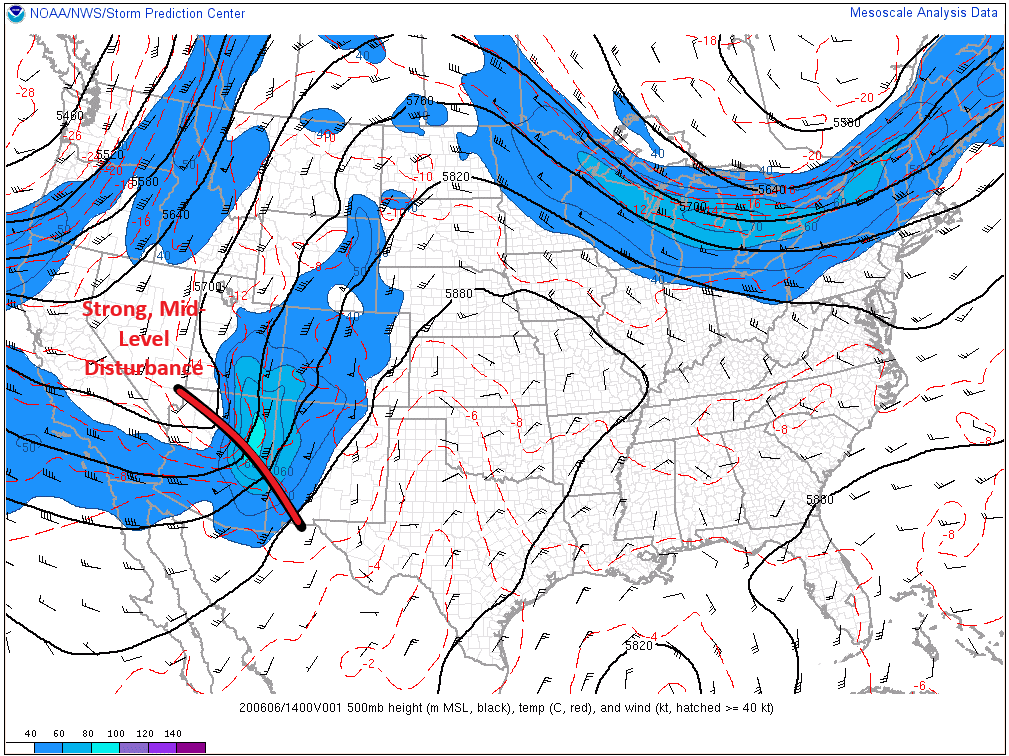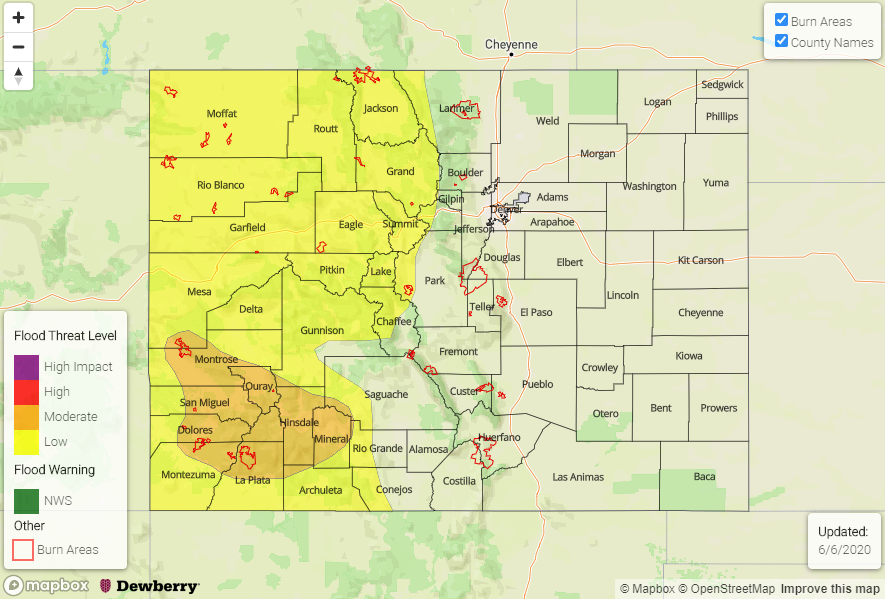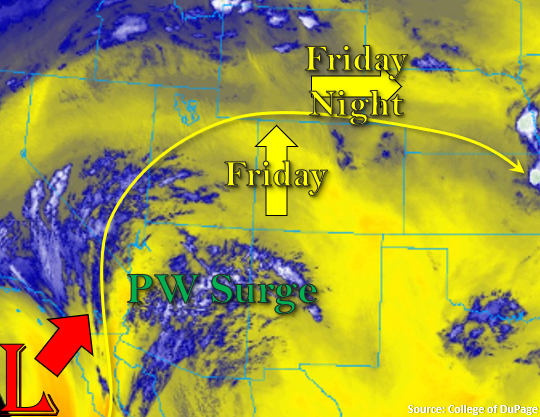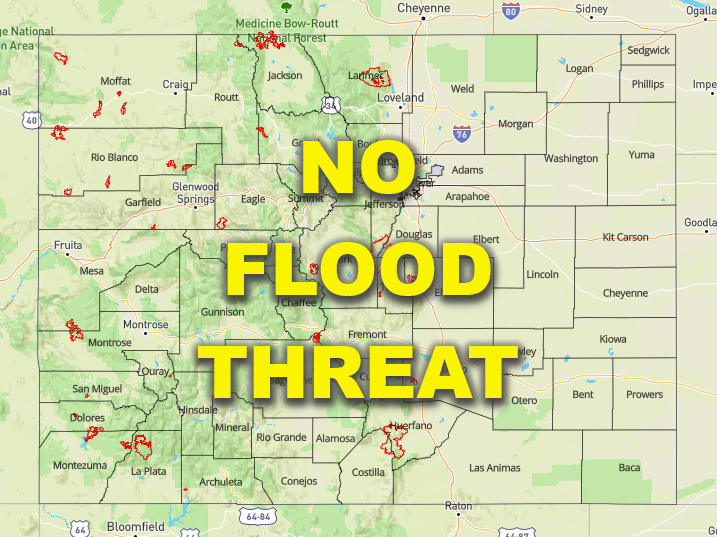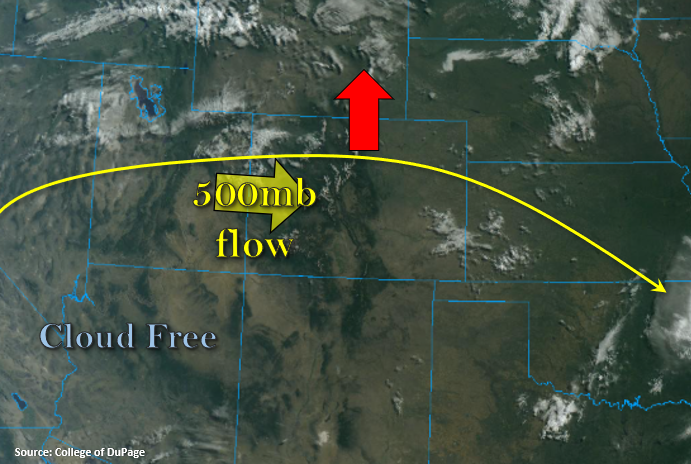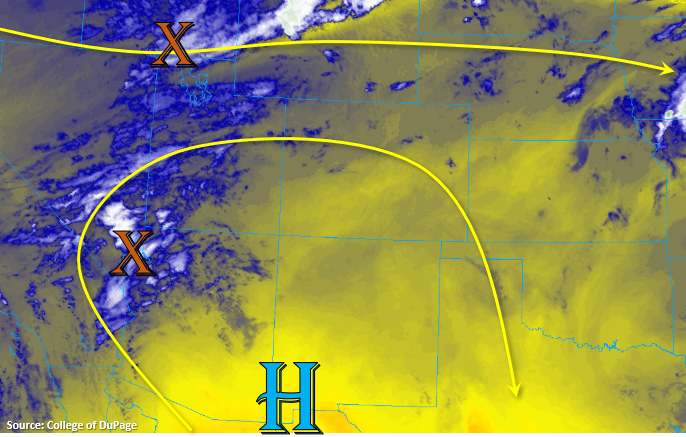Issue Date: 6/6/2020
Issue Time: 9:50 AM
— A MODERATE Flood Threat is Forecast Today for Portions of the Southwest Slope, San Juan Mountains, including the 416 Fire Burn Area
— A LOW Flood Threat is Forecast Today for Portions of the Southwest Slope, San Juan Mountains, Grand Valley, Northwest Slope, Northern Mountains, and Central Mountains Regions, including the Lake Christine Fire Burn Area
The mid-level low-pressure system that came onshore the Southern California coast yesterday will shift northeastward today, crossing directly over Colorado as it makes its way towards eastern Montana/western North Dakota. The dynamic support that this type of system brings, combined with sufficient moisture, will allow for organized thunderstorms to develop late this morning/early this afternoon over western Colorado, which will quickly race to the east-northeast with the disturbance. Severe wind gusts, hail, isolated tornadoes, and bouts with moderate-to-heavy rainfall are expected from the strongest of these storms.
The 416 Fire burn area and the Lake Christine Fire burn area are within today’s flood threat areas, and they deserve close attention. Storm motions and the scattered nature of storms will mitigate the risk of flash flooding, so they do not merit more than the larger flood threat assigned to their region. However, due to their quick-reacting nature, any strong storm can be a problem.
Early in the afternoon, the wave of strong storms will reach the easternmost mountains, eventually pushing over the plains by mid-to-late afternoon. A few will be strong-to-severe, producing wind gusts up to 80 mph, large hail, and plenty of cloud-to-ground lightning. Aside from the storm threat today, high winds and dry conditions are expected, and Red Flag and High Wind Warnings have been issued. Please refer to your local National Weather Service office for more information regarding these warnings.
Today’s Flood Threat Map
For more information on today’s flood threat, see the map below. Hover over the threat areas for more details and click on burn areas to learn more about them. For Zone-Specific forecasts, scroll below the threat map.
Zone-Specific Forecasts
Front Range, Southeast Mountains, Urban Corridor, Palmer Ridge, Northeast Plains, Southeast Plains, and Raton Ridge:
A wide range of weather impacts are possible today, beginning with this morning’s scattered showers and thunderstorms, Red Flag and High Wind warnings thanks to the large-scale conditions aided by the mid-level low pressure system, and a bout with strong-to-severe thunderstorms this afternoon and evening. The highest risk of severe weather will be over the mountains and high valleys, where wind gusts up to 80-100 mph, large hail, and isolated tornadoes will be possible with the strongest storms. East of the mountains, surface wind gusts will be strong in the absence of thunderstorms, and underneath thunderstorms, wind gusts may reach up to 80 mph. No flash flood threat is warranted, as storm motions will be too quick to the east-northeast for rain rates generally around 0.2-0.4 inches/hour to cause flash flooding. However, the strongest storms may produce rain rates up to 0.5-0.7 inches/hour, which may cause localized street/field ponding.
Primetime: 11 AM – 7 PM for the Front Range and Southeast Mountains; Noon – 9 PM for the Urban Corridor, Palmer Ridge, and Raton Ridge; 2 PM – 11 PM for the Northeast Plains and Southeast Plains.
Northwest Slope, Northern Mountains, Grand Valley, Central Mountains, Southwest Slope, San Juan Mountains, and San Luis Valley:
Scattered showers and weak thunderstorms this morning are the opening act for strong-to-severe thunderstorms later this morning through this afternoon. Due to the increase in available moisture, a low-to-moderate flood threat has been issued for much of western Colorado (see threat map above). Quick storm motions to the east-northeast will mitigate the flood threat somewhat, but steep terrain, burn scars, and frequent problem areas will need to be monitored. The strongest storms may produce wind gusts up to 60-80 mph in the valleys, and up to 100 mph at the highest elevations, along with frequent lightning, large hail up to 1.5” in diameter, and isolated tornadoes.
Timing: 10 AM – 3 PM for the Southwest Slope, San Juan Mountains, Grand Valley regions, 10 AM – 5 PM for the Northwest Slope, Northern Mountains, Central Mountains, and San Luis Valley
